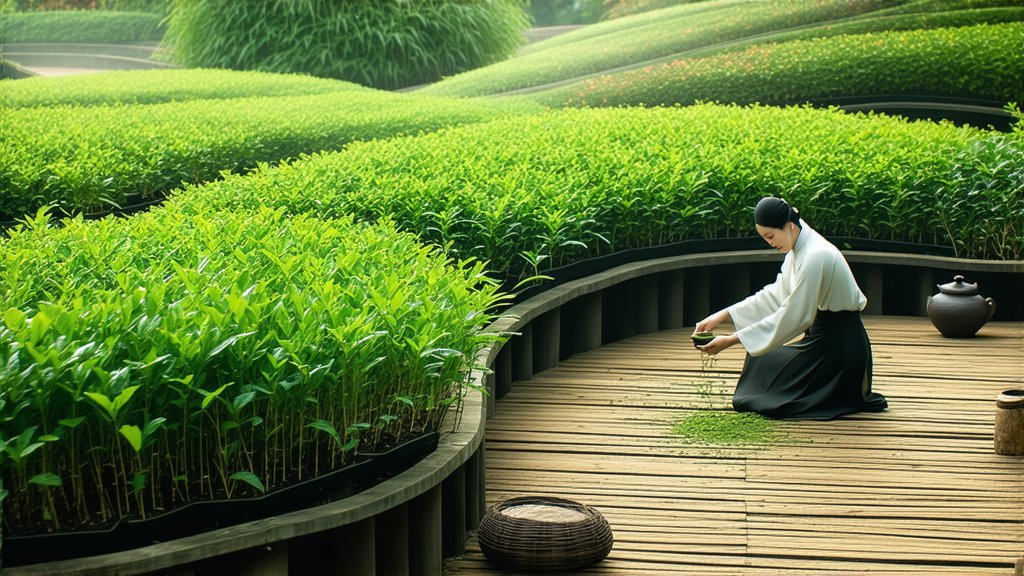
Longjing tea, also known as Dragon Well tea, is one of the most renowned and celebrated varieties of Chinese green tea. Originating from the picturesque village of Longjing in the West Lake region of Hangzhou, Zhejiang Province, this tea has captivated tea enthusiasts for centuries with its unique flavor profile and elegant appearance. In this article, we will delve into the rich history, diverse varieties, intricate production process, and nuanced art of appreciating Longjing tea.
Historical Background
The origins of Longjing tea can be traced back to the Tang Dynasty (618–907 AD), but it truly gained prominence during the Qing Dynasty (1644–1912). According to legend, Emperor Kangxi of the Qing Dynasty discovered the tea during one of his visits to the West Lake area. He was so impressed by its quality that he decreed four specific tea bushes as "Imperial Tea Shrubs," which were exclusively cultivated to produce tea for the imperial court. Today, these ancient tea bushes are still revered and serve as a testament to the long-standing legacy of Longjing tea.
Varieties of Longjing Tea
Longjing tea comes in several varieties, each distinguished by its grade and quality. The highest quality Longjing tea is known as Xin Cha or "New Tea," which refers to tea harvested during the first flush of the spring season. This early harvest results in tender leaves and a more delicate flavor. Other notable varieties include:
- Mei Cha: Harvested during the second flush of the spring season, Mei Cha offers a slightly stronger flavor compared to Xin Cha.
- Gu Yu Cha: This variety is harvested in late spring and is characterized by its robust flavor and affordability.
- Xia Cha: Summer-harvested Longjing tea tends to have a coarser texture and a more astringent taste.
- Qiu Cha: Autumn-harvested tea provides a balance between the freshness of spring tea and the fuller body of summer tea.
Among these, Xin Cha and Mei Cha are the most prized for their superior quality and refined taste.
Production Process
The production of Longjing tea involves several meticulous steps that ensure the preservation of its unique characteristics:
-
Harvesting: The best Longjing tea is made from the youngest, most tender leaves. These are typically handpicked to ensure only the top one or two leaves and the bud are selected.
-
Withering: After harvesting, the leaves undergo a brief period of withering to reduce moisture content and prepare them for the next stage. This step helps to soften the leaves and facilitate the rolling process.
-
Fixation: Unlike other green teas that may be steamed, Longjing tea is pan-fried at high temperatures. This method halts oxidation and preserves the green color of the leaves. The pan-frying process also contributes to the characteristic flat shape of the finished tea leaves.
-
Shaping: Following fixation, the leaves are meticulously shaped by hand or using specialized machinery to achieve the iconic flat, sword-like appearance. This shaping process requires skill and precision to ensure uniformity and aesthetic appeal.
-
Drying: The final step involves drying the shaped leaves to remove any remaining moisture. This ensures the tea's stability and longevity during storage.
Art of Appreciating Longjing Tea
Appreciating Longjing tea is an art form that involves all the senses. Here are some tips to enhance your experience:
-
Visual Appreciation: Observe the dry leaves for their uniform shape and vibrant green color. When brewed, note the bright yellow-green hue of the liquor.
-
Aromatic Experience: Longjing tea emits a subtle, vegetal fragrance with hints of floral notes. Take a moment to inhale the aroma before tasting.
-
Tasting: Sip slowly to savor the tea's smooth, mellow flavor with a slight sweetness and minimal astringency. Pay attention to the aftertaste, which should be refreshing and lingering.
-
Texture: Feel the silky texture of the tea in your mouth, which is a result of the careful pan-frying process.
-
Multiple Infusions: Longjing tea can be steeped multiple times, with each infusion revealing different layers of flavor. Typically, the first infusion is the strongest, while subsequent ones offer milder, yet equally enjoyable profiles.
Conclusion
Longjing tea is more than just a beverage; it is a cultural treasure that embodies the essence of Chinese tea heritage. From its storied past to its meticulous production process, every aspect of Longjing tea speaks to the dedication and artistry involved in its creation. Whether you are a seasoned tea connoisseur or a curious novice, exploring the world of Longjing tea promises a delightful journey through the rich tapestry of Chinese tea culture.